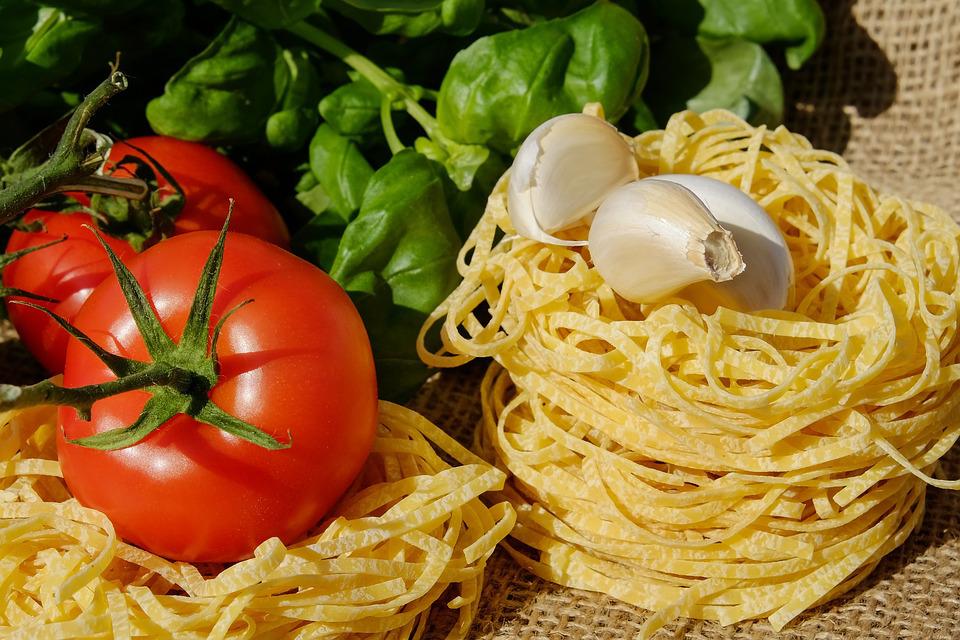Introduction to FODMAPs

Here we go! Our website is now live and we’re here writing our very first post. What better way to get started than give you all a quick introduction to FODMAPs. What even are they? How can some of them be in foods that are so delicious, yet they end up making us feel miserable, sometimes without us even know it is them causing our discomfort? And why is it they seem to be in every single food? Yes, I’m looking at you onion and garlic! How do I even go about starting this diet?
These are some of the questions that popped straight into my head when I first came across the low FODMAP diet. The more information I read the more fascinated I became with the diet. Yet the more I read somehow it seemed to just become more and more complicated. So let me say that the purpose of this website is to give you all the information we can possibly compile, in an as easy way as possible to help you get started on your own low FODMAP journey.
So what is the Low FODMAP diet?
FODMAP stands for fermentable oligosaccharides, disaccharides, monosaccharides and polyols. A bunch of fancy scientific words for ”carbohydrates (sugars) that the small intestine struggles to break down and absorb”. This diet is, to this day, being developed by scientists in Australia at the Monash University (you can check out their work here) . The research behind the diet is super interesting and really promising for IBS sufferers. This diet is specifically designed to reduce, and even eliminate IBS symptoms.
Many people have no issues with FODMAPs and there are no true health benefits to avoiding them. This is not a weight loss diet (although one could definitely be successful losing weight in combination with following a low FODMAP diet if that is the goal!). However, that being said, many people with IBS have sensitivities to a lot of these FODMAPs. This, along with other non-dietary triggers such as stress, means eating these foods can cause a lot of digestive distress.
How does the diet work?
I’d like to preface this by saying that this diet is not a cure for IBS, rather a new way of eating that helps you to control your IBS symptoms and therefore is a diet that, if you find helpful, will likely need to be incorporated indefinitely into your daily life. The low FODMAP diet works in three phases:
Phase one
Phase one is a little tough: low FODMAP. Exactly how it sounds. You substitute foods that are high in FODMAPs to ones that are either are low in, or free from FODMAPs. This phase is necessary to get a handle on and eliminate IBS symptoms. This phase should only be followed until symptoms are alleviated (this usually takes somewhere between 2-6 weeks). Luckily for you we have created this website to provide loads of delicious recipes that are suitable for this phase!
Phase two
Phase two: re-introduction. Again, relatively self explanatory, and unfortunately probably the toughest phase. Taking it quite slowly you re-introduce foods from each FODMAP sub-group one by one, leaving enough time in between additions to see if any symptoms return. This allows you to see what groups or foods are triggers for your symptoms. You need to maintain a low FODMAP diet throughout this phase too. This is to make sure you are seeing true symptoms from a food and not from FODMAP loading (more on that later).
Phase three
Phase three: personalisation. This is the final diet that you (theoretically) follow indefinitely. Once you have identified the groups or foods that are triggers, you can eliminate them, but eat a little more normally than the previous phases. It is highly unlikely that you will be sensitive to all the FODMAP groups. Even if that is the case, it is likely that you will have at least some level of tolerance to the FODMAP. This means you might still be able to eat small quantities of foods you find hard to live without.
In this final phase you can eat everything that doesn’t trigger symptoms, whether it is high in FODMAPs or not. It is about finding a diet that works for you and allows you to feel your best, away from IBS.
Get started with the low FODMAP diet here at SimplyFODMAP
The phases sound daunting, I know. Having been through it ourselves, trying to figure it all out we realised that there wasn’t much information out there on how to navigate through the phases. At the time there also weren’t many good recipes for the different phases.
We absolutely love to cook, and if there is anything good that has come from this, it is that we has been forced to be more creative with cooking (onion and garlic are big triggers in our house and of course they happen to be in basically EVERY recipe!!). Therefore we decided to try to compile all of the recipes we have come to love and use often with as many informational pages as possible surrounding all things FODMAPS, to break it all down and help you repair the relationship between you and your gut!
